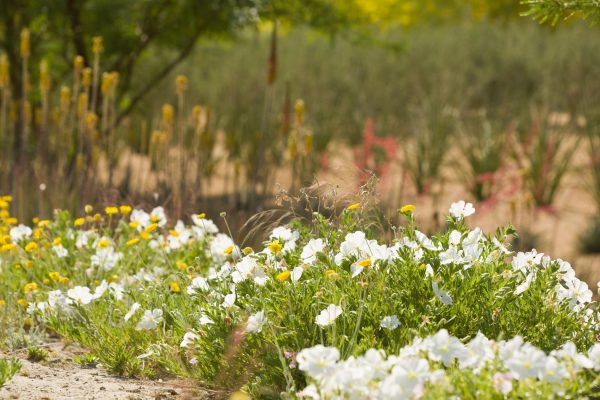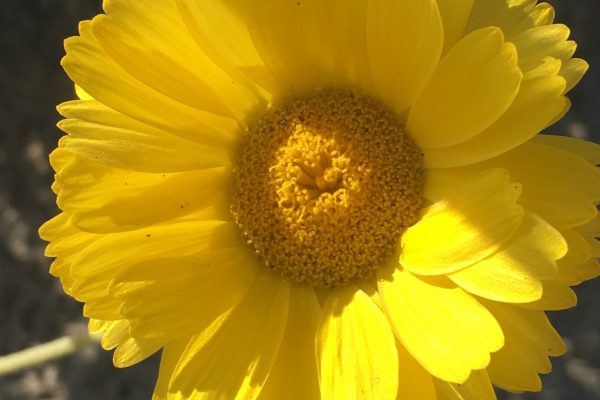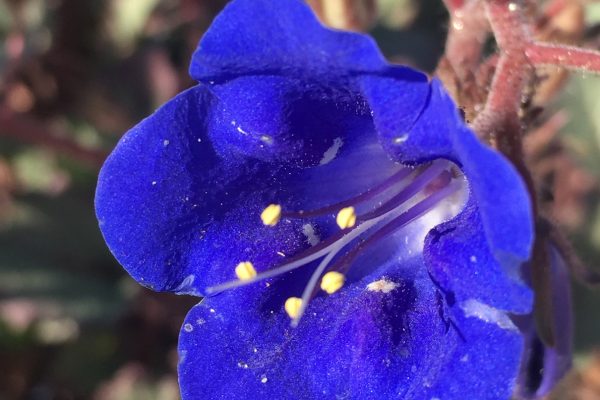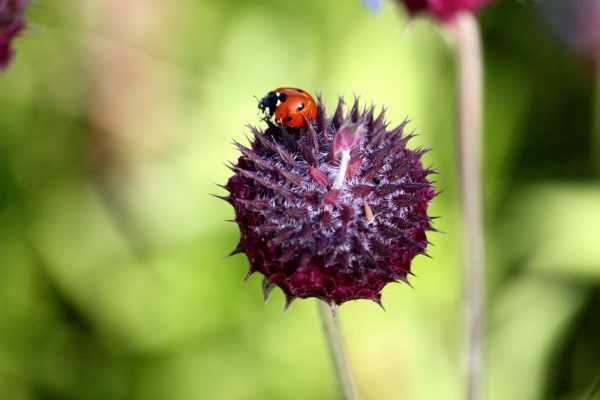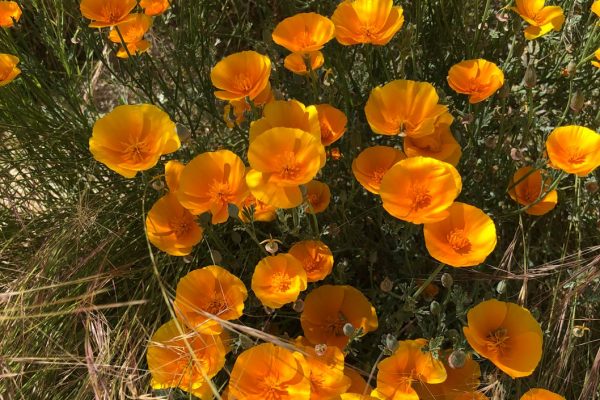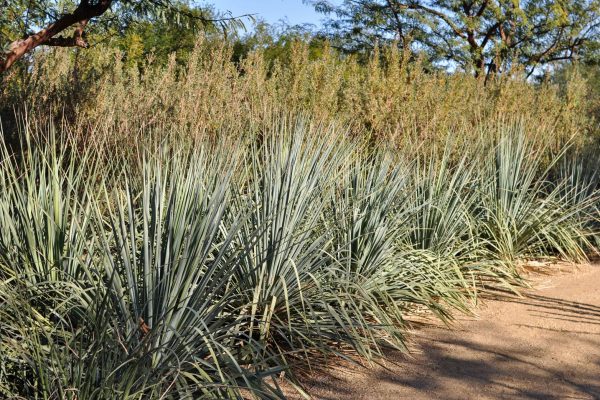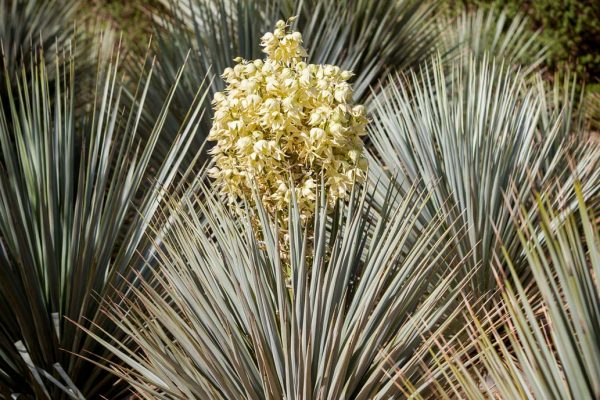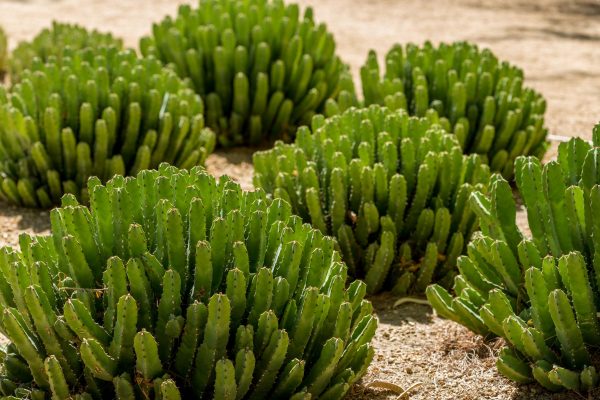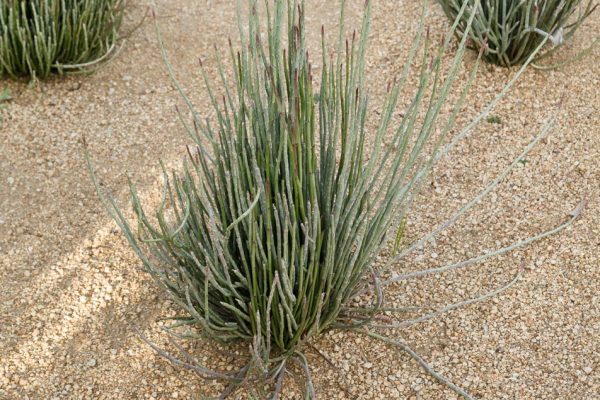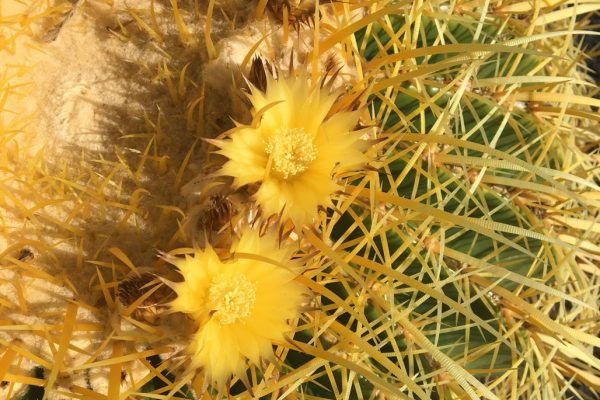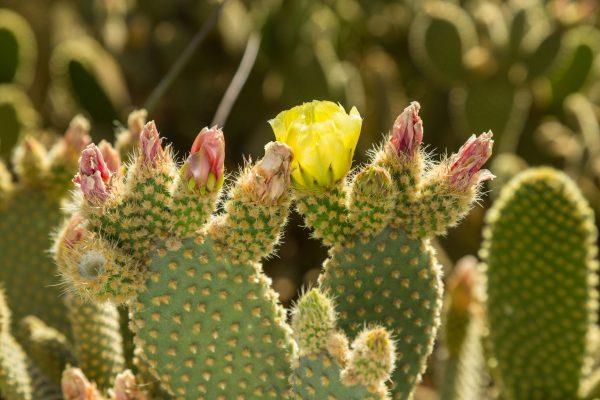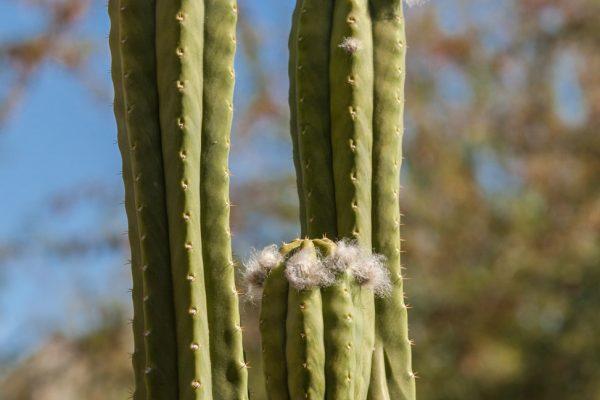Desert Primrose, like the purple Sand Verbena with which it shares its dunes, is one of the more identifiable wildflowers of the Colorado Desert (the desert that encompasses the Coachella Valley). Desert Primrose comes up in spring to add soft, white cup-shaped blooms among the clusters of purple verbena. It can be surprising to see such a delicate looking flower in the desert’s harsh climate.
The blooms open at night and are gone by the following midday. During this period, it is pollinated by the White-lined Sphinx Moth (Hyles lineata). These moths have a unique flight pattern that resembles hummingbirds. In fact, they are sometimes confused with hummingbirds. Once pollinated, the Primrose will set seed. When it has completed its cycle, the stems will grow up and as they dry out, their tips will meet at the top, forming what looks like a birdcage. This has given the plant its additional nickname, Birdcage.
The Wildflower Field
The wildflower field at Sunnylands is overseeded annually with native wildflowers and bunch grasses. This provides visitors with a view of the larger cyclical bloom cycles that we have in the desert. Starting in February, a variety of native species and bunch grasses begin emerging. Each year the vegetation varies slightly, depending on which seed dominates the space. The field can range in color from purples to oranges, whites, and pinks, with a variety of combinations. We cannot guarantee that all wildflowers will be present each year.
